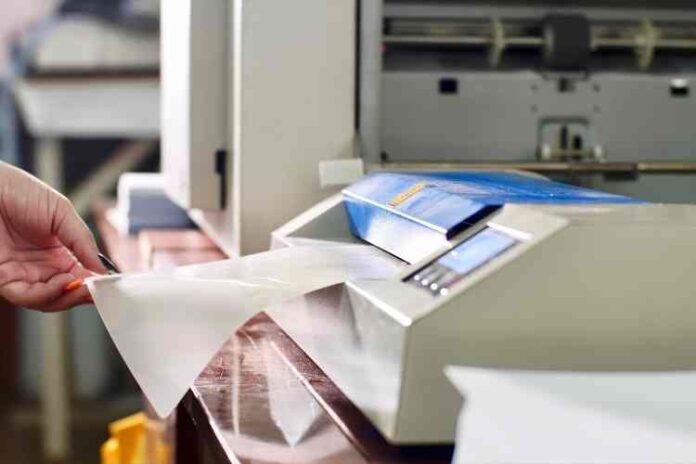Are you looking for a way to add protection and extend the life of documents, photos, or other important materials? Heat-activated lamination film might be just the solution.
This article explores how heat-activated lamination works and some possible applications of this amazing technology. By mastering the basics of this process and understanding its capabilities, you can harness all that it has to offer!
Whether you’re trying to protect items from everyday wear and tear or preserve something special for years to come, heat-activated lamination films enable users to lock out dust, dirt, humidity, and more while providing an ultra-glossy finish with no bubbles.
What is Heat-Activated Lamination Film and How Does It Work
Heat-activated lamination film, as the name suggests, is a type of film that is activated by heat. It is widely used for protecting paper documents, photos, and prints from moisture, dust, and other damage.
The film is made of several layers, with the top layer being a glossy or matte finish that provides a smooth surface for writing or printing. When heated, the film’s adhesive layer activates, bonding the film to the paper surface.
This process creates an airtight seal, which protects the paper from damage and enhances its durability. Heat-activated lamination film is popular among businesses and organizations that frequently handle documents and prints, as it helps preserve them for longer periods of time.
With a variety of options and features available, it’s an easy and affordable way to ensure the longevity of your important documents.
Benefits of Using Heat-Activated Lamination Film
Lamination is a process that has been used for years to protect and enhance documents. Heat-activated lamination film has quickly become a popular choice due to its many benefits.
One of the main advantages is the added durability and protection it provides. This type of film can withstand wear and tear as well as water damage, making it a reliable option for important documents.
Additionally, heat-activated lamination film can improve the appearance of a document with a glossy finish that enhances colors and images. Overall, using heat-activated lamination film can help protect and improve the quality of important documents, making it a valuable investment.
Typical Applications for Heat-Activated Lamination Film
Heat-activated lamination film may not be the most glamorous product on the market, but it’s certainly an essential one. This ultra-thin, transparent layer of film can add a protective coating, prevent damage, and extend the life of just about anything.
From restaurant menus to driver’s licenses, heat-activated lamination film is used for a wide array of applications. But its uses don’t end there. It’s also perfect for posters, ID cards, and even outdoor signage.
These applications require not only durability and protection but also a crystal-clear finish that allows the original image to shine through.
Whether you’re looking to protect your favorite recipe or create a sleek-looking business card, heat-activated lamination film is a must-have in your arsenal of office supplies.
How to Choose the Right Heat-Activated Lamination Film for Your Project
When it comes to laminating your projects, choosing the right heat-activated film can make all the difference. With so many options available, it can be overwhelming to decide which one is best for your specific needs.
Factors such as the type of document you’re laminating, the expected level of usage, and the environment in which it will be displayed should all be taken into consideration.
It’s important to do your research and select a product that will provide the necessary level of protection and durability while also enhancing the appearance of your work.
By carefully weighing your options, you can ensure that your documents will stay protected and look great for years to come.
Tips for Working with Heat-Activated Lamination Film
When it comes to laminating projects, heat-activated film is a popular choice for its durability and professional look. However, working with this type of film can be tricky if you’re not familiar with the process.
To start, make sure that you have a laminator that can accommodate heat-activated film. Before feeding your project into the laminator, be sure to thoroughly clean the machine to avoid any debris or residue on your film.
When it’s time to laminate, be patient and allow the film to reach the appropriate temperature before feeding it through the machine. Lastly, be careful with your project as it comes out of the laminator, as the heated adhesive may still be hot to the touch.
With these tips in mind, working with heat-activated lamination film can be a breeze! Heat-activated lamination film is a versatile and convenient material used in many industries. With the knowledge gained here, you’re now fully equipped to explore the world of creative projects that are made easy through heat-activated lamination film!
